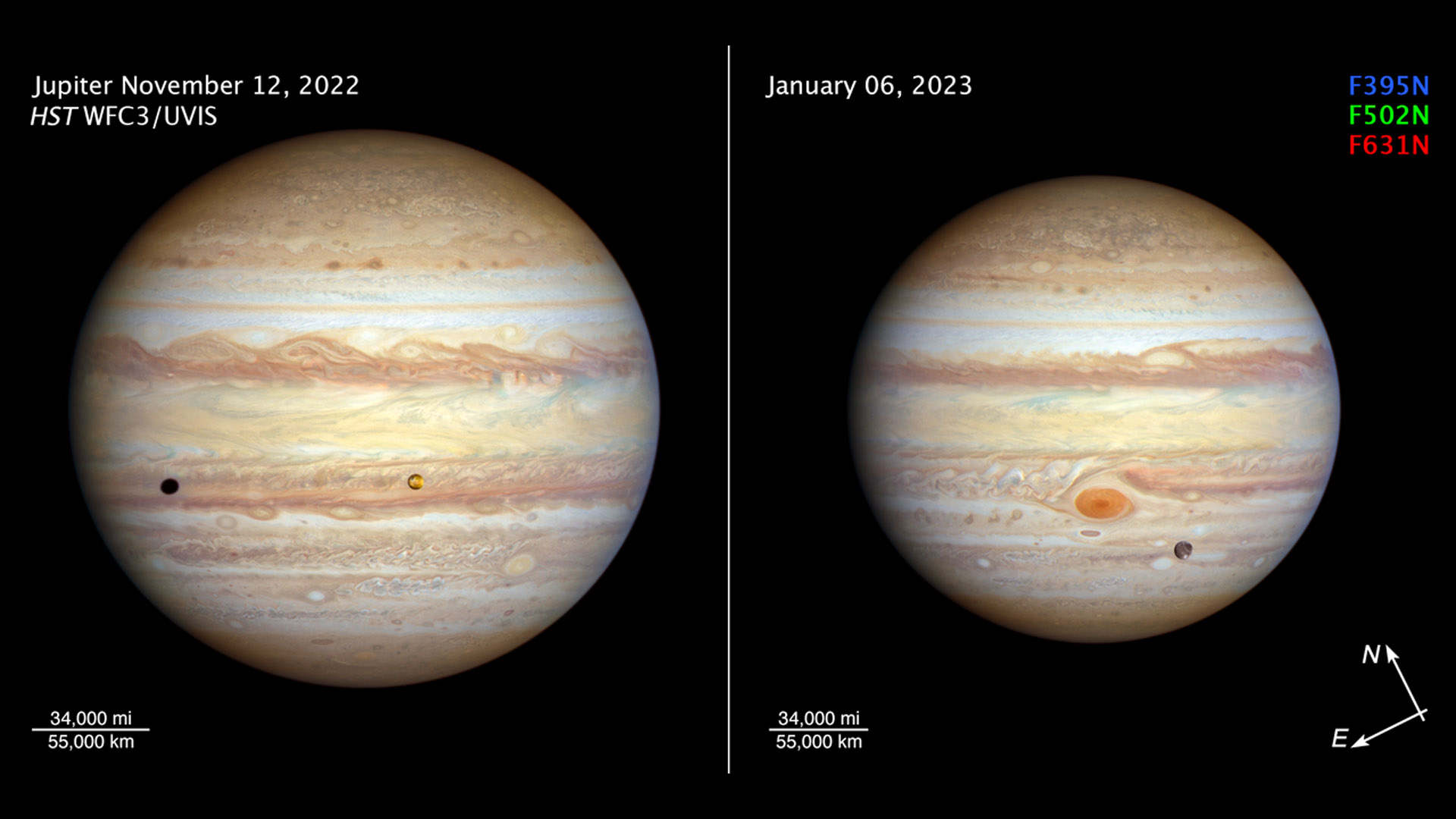Uranus grows a smoggy cap while Jupiter's Red Spot keeps shrinking, Hubble telescope reveals (photos)
The Hubble Space Telescope keeps an eye on the slowly changing weather of the solar system's giant planets.

New images of Uranus and Jupiter taken by the Hubble Space Telescope reveal how weather slowly changes on these giant, distant planets.
Unlike Earthly weather that changes from day to day, atmospheric conditions on planets in the outer solar system are fairly stable. These planets receive very little sunlight and take years to decades to complete one orbit around the sun. Still, when scientists compare Hubble Space Telescope images of these planets captured several years apart, they see that their atmospheres are, in fact, alive.
Hubble images of the ice giant Uranus taken in 2014 and 2022, for example, reveal that a cap of icy smog is growing over the planet's north pole as it moves toward its northern summer season. Uranus' seasons last over 20 years each, as one year on the planet lasts a staggering 87 Earth years.
Related: Two moons of Uranus may have active subsurface oceans
The white cap visible in the 2022 image is made of what the Space Telescope Science Institute describes as "photochemical haze" similar to the air-pollution-rich smog that forms above major cities on Earth. Hubble has been monitoring the formation of this cap for several years and found it was getting increasingly brighter. Scientists are trying to understand the chemical processes driving the formation of this cap, but data about the distant Uranus is limited due to the long duration of its seasons. The planet will reach its next summer solstice in 2028. The last time astronomers were able to observe the planet during this part of its year was in the 1940s.
Differences between Uranus' seasons are believed to be extreme, as the planet rotates around an axis that is tilted on a mere 8-degree angle off its orbital plane. That means the planet almost rolls on its side. As a result, Uranus' two hemispheres receive barely any sunshine during their respective winter periods.
Images of the solar system's largest planet, Jupiter, also revealed interesting weather trends. In the latest Hubble pictures taken earlier this year, the gas giant's famous Great Red Spot is at its smallest since regular observation began 150 years ago. The Great Red Spot is a giant storm currently about twice as wide as Earth that swirls in the planet's southern hemisphere with wind speeds around its perimeter reaching a whopping 270 to 425 mph (430 to 680 kph). But while this trademark storm may be weakening, the Hubble observations show that a new giant storm may be forming north of Jupiter's equator.
Breaking space news, the latest updates on rocket launches, skywatching events and more!
Astronomers call the new stormy region a "vortex street," as it consists of a row of interlocking cyclones that spin in alternating directions. If those storms were to merge, they could create a megastorm even greater than the Great Red Spot. Scientists, however, think that this merger is quite unlikely, the Space Telescope Science Institute, which manages Hubble's science operations, said in the statement.
Hubble has been observing Jupiter since the telescope reached Earth orbit in the early 1990s, and it wasn't until the last decade that scientists detected the formation of the cyclones making up the "vortex street."
Follow Tereza Pultarova on Twitter @TerezaPultarova. Follow us on Twitter @Spacedotcom and on Facebook.

Tereza is a London-based science and technology journalist, aspiring fiction writer and amateur gymnast. Originally from Prague, the Czech Republic, she spent the first seven years of her career working as a reporter, script-writer and presenter for various TV programmes of the Czech Public Service Television. She later took a career break to pursue further education and added a Master's in Science from the International Space University, France, to her Bachelor's in Journalism and Master's in Cultural Anthropology from Prague's Charles University. She worked as a reporter at the Engineering and Technology magazine, freelanced for a range of publications including Live Science, Space.com, Professional Engineering, Via Satellite and Space News and served as a maternity cover science editor at the European Space Agency.

